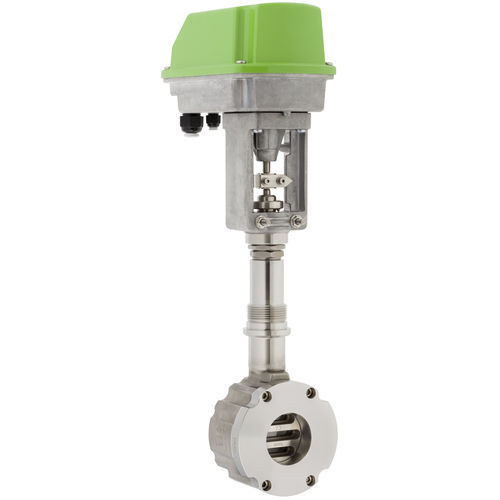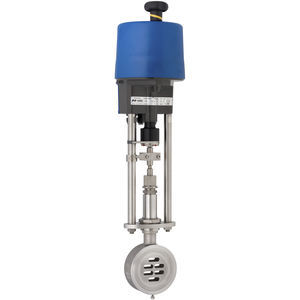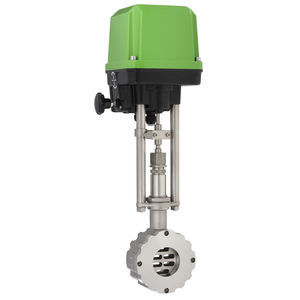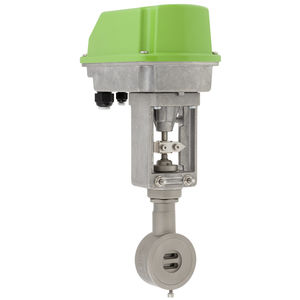
- Hydraulics - Pneumatics
- Valve
- Sliding gate valve
- Schubert & Salzer Control Systems GmbH
- Company
- Products
- Catalogs
- News & Trends
- Exhibitions
Sliding gate valve 8230electrically-operatedshut-offregulating
Add to favorites
Compare this product
Characteristics
- Type
- sliding gate
- Operation
- electrically-operated
- Function
- shut-off, regulating
- Media
- for hot water, for cooling water, for gas, for air, for steam, for oxygen, for natural gas, for CO2, propane
- Body
- wafer, stainless steel, carbon steel
- Applications
- for industrial applications, for the chemical industry, for the food industry, for wafers
- Other characteristics
- compact, for aggressive media
- DN
Max.: 250 mm
(9.843 in)Min.: 15 mm
(0.591 in)- Pressure
Max.: 40 bar
(580.2 psi)Min.: 0 bar
(0 psi)10 bar, 40 bar
(145 psi, 580.2 psi)- Temperature
Max.: 350 °C
(662 °F)Min.: -60 °C
(-76 °F)
Description
The compact sliding gate motor valve Type 8230 in reinforced design with on/off and control operation is suitable for a wide range of process applications. Media such as steam, liquids, gases, etc. can be excellently controlled. Using super-capacitor technology, the valve returns to its defined basic position when the power supply fails. This competitively priced version with its metal body is a true alternative to pneumatic actuators.
•Size:
DN15 - DN250
•Pressure:
PN 10/40
ANSI#150, #300
•Material:
Stainless steel:
Body 1.4408
Cover 1.4404
Carbon steel:
Body 1.0619
Cover 1.4404
•Temperature:
Media temperature: -60 °C up to 350 °C
Special versions available on request.
Connection:
Wafer type design
Accessories:
Metal bellows
Position electronics
Analog stroke feedback
Limit switch
Fail safe feature
Actuator:
Control actuators or 3-point actuators
Control force: 800 N
Motor voltages: 24 V AC/DC, 230 V, 110/120 V
Control: 3-point; 2-10 V; 4-20 mA
Class of protection: IP 65
Catalogs
Other Schubert & Salzer Control Systems GmbH products
Motor valves
Related Searches
- Schubert & Salzer valve
- Schubert & Salzer manual valve
- Schubert & Salzer control valve
- Schubert & Salzer stainless steel valve
- Ball valve
- Schubert & Salzer water valve
- Schubert & Salzer pneumatic valve
- Threaded valve
- Electrically operated valve
- Schubert & Salzer flange valve
- Schubert & Salzer regulating valve
- Schubert & Salzer shut-off valve
- Flap valve
- Non-return valve
- Schubert & Salzer electric valve
- Schubert & Salzer ISO valve
- Schubert & Salzer gas valve
- Valve with handwheel
- Schubert & Salzer pneumatically-operated valve
- Pressure limiter
*Prices are pre-tax. They exclude delivery charges and customs duties and do not include additional charges for installation or activation options. Prices are indicative only and may vary by country, with changes to the cost of raw materials and exchange rates.












